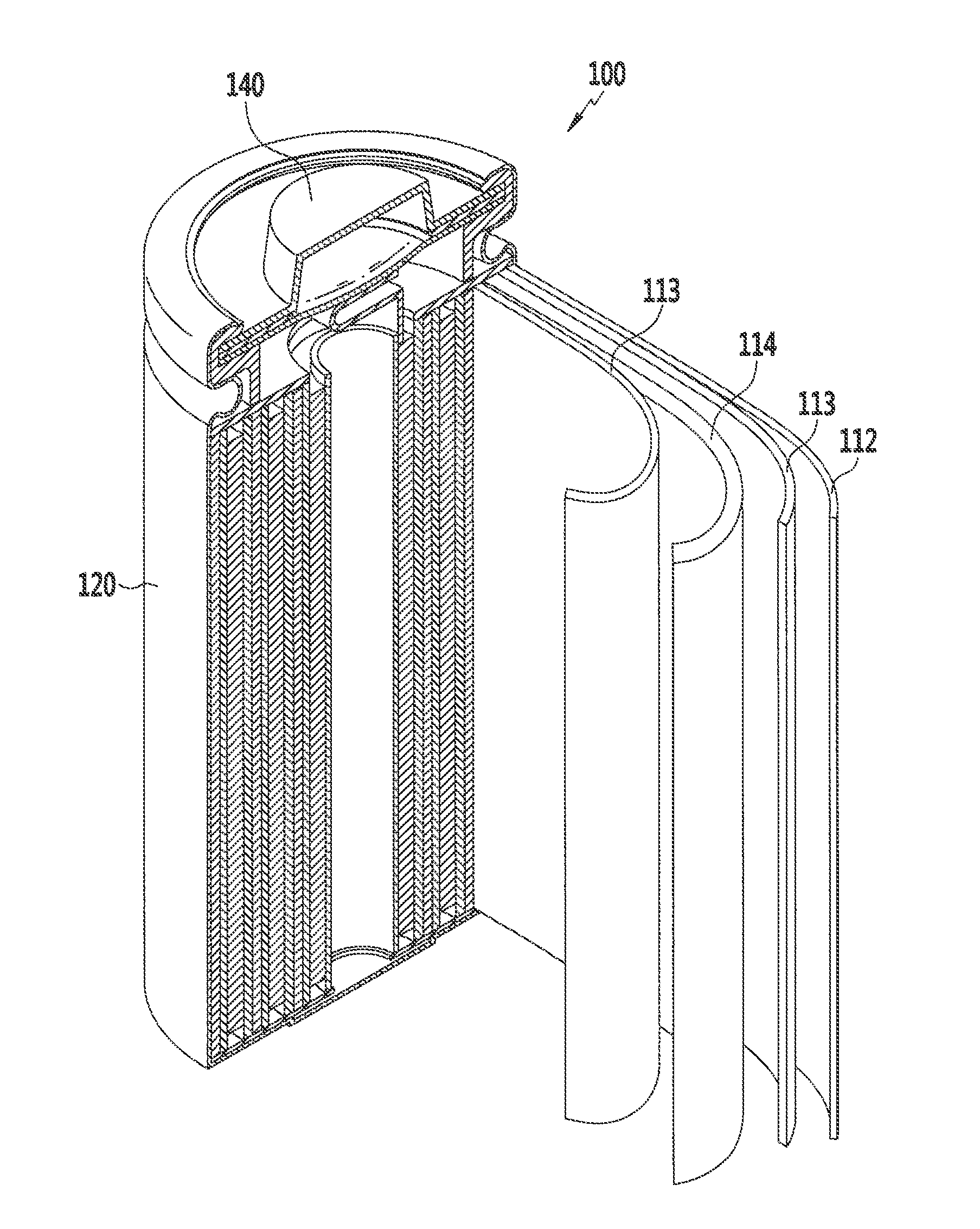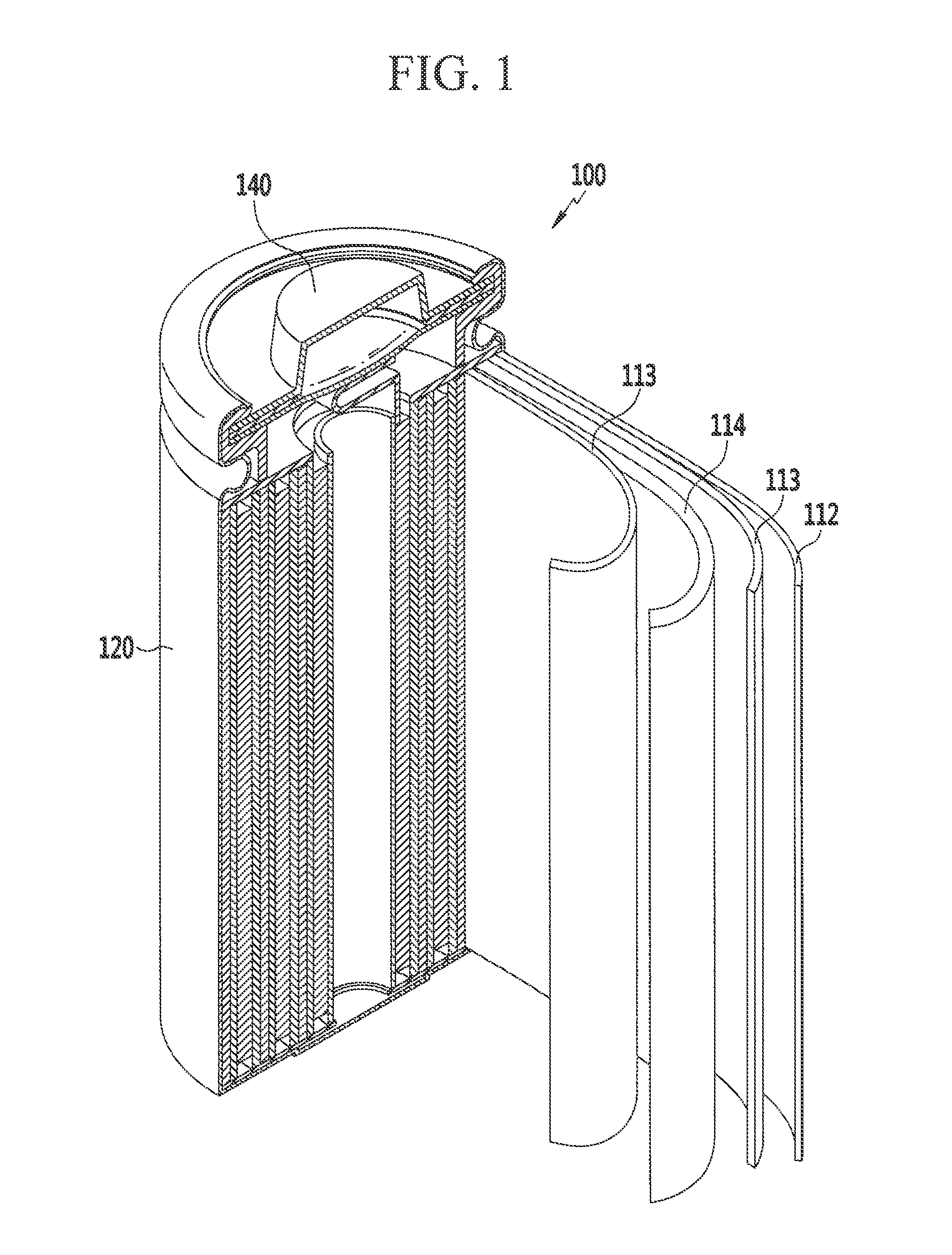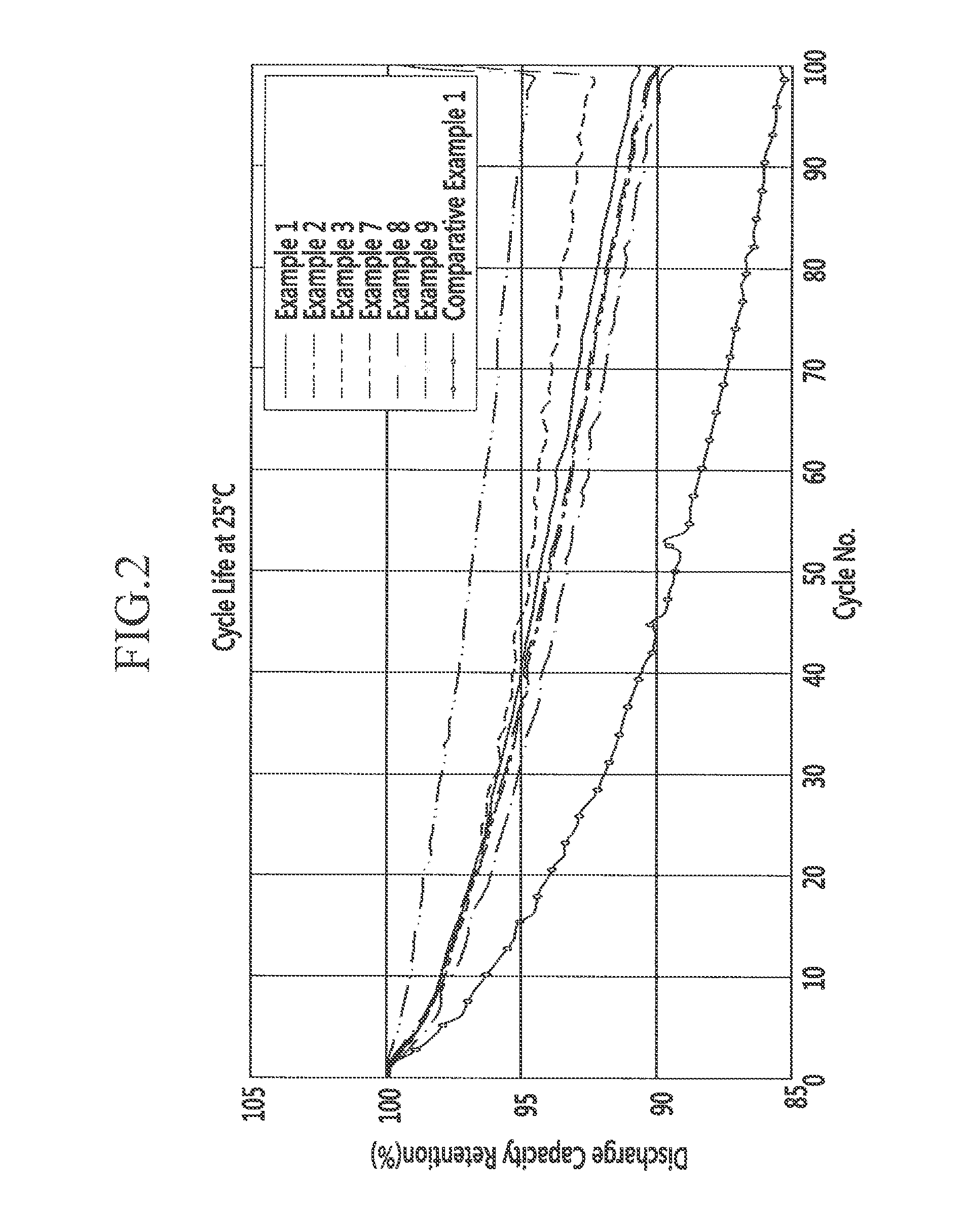Rechargeable lithium battery
- Summary
- Abstract
- Description
- Claims
- Application Information
AI Technical Summary
Benefits of technology
Problems solved by technology
Method used
Image
Examples
preparation example 1
Fabrication of Positive Electrode
[0086]A positive active material was prepared by mixing LiCoO2 and Li2MoO3 (in a composition ratio according to the following Table 1), SOLEF® 6020 as a binder, and denka black as a conductive material in a mass composition ratio of 96:2:2 in NMP (n-methyl-2-pyrrolidone) as a solvent to prepare slurry. SOLEF® is a polyvinylidene fluoride polymer available from Solvay Specialty Polymers, Brussels, Belgium. SOLEF® is a registered trademark of Solvay Et Cie. Corporation, Brussels, Belgium. The slurry was coated on a 12 μm-thick aluminum current collector. The coated aluminum current collector was dried and compressed to fabricate a positive electrode.
preparation example 2
Fabrication of Negative Electrode
[0087]A negative active material was prepared by mixing graphite and silicon oxide (SiOx, x=1) powder (available from Shin-Etsu chemicals Co. Ltd.) (in a composition ratio according to the following Table 1), carboxylmethyl cellulose (CMC) and styrene butadiene rubber (SBR) as a binder in a mass composition ratio of 98:1:1 in water as a mixing solvent to prepare a slurry. The slurry was coated on a 12 μm-thick copper current collector. The coated copper current collector was dried and compressed in a manner similar to that of the positive electrode to fabricate a negative electrode.
experimental example
Cell Evaluation
[0089]The positive and negative electrodes were assembled to fabricate a pouch-type full cell. The cell was evaluated regarding charge and discharge characteristics and cycle-life characteristics.
[0090]FIG. 2 shows cycle-life characteristics of the battery cells.
[0091]Herein, an electrolyte solution was prepared by mixing 1.3M LiPF6 and ethylene carbonate / ethylmethyl carbonate / dimethyl carbonate (in a mole ratio of 3:3:4).
[0092]Evaluation condition: charge 0.2C, 4.35V, constant-current constant voltage (CCCV; 0.05C cut off); and discharge 0.2C, 2.75V, and cut off (1C=180mAh / g).
TABLE 1Positive electrodeNegative electrodeCapacity[based on 100 wt%[based on 100 wt%retentionof positive activeof negative activeChargeDischarge(100material]material]capacitycapacityEfficiencycycle)LiCoO2Li2MoO3graphiteSiOx(mAh / g)(mAh / g)(%)—Example 19559731831638992%Example 290109731851558490%Example 385159731881477893%Example 4802097319013973—Exanjple 5703097319512363—Example 6604097320010754—...
PUM
 Login to View More
Login to View More Abstract
Description
Claims
Application Information
 Login to View More
Login to View More - R&D
- Intellectual Property
- Life Sciences
- Materials
- Tech Scout
- Unparalleled Data Quality
- Higher Quality Content
- 60% Fewer Hallucinations
Browse by: Latest US Patents, China's latest patents, Technical Efficacy Thesaurus, Application Domain, Technology Topic, Popular Technical Reports.
© 2025 PatSnap. All rights reserved.Legal|Privacy policy|Modern Slavery Act Transparency Statement|Sitemap|About US| Contact US: help@patsnap.com



